A single day Summer Tour today, in North Norfolk. It was a glorious sunny day, hot out of the wind but with a fresh east wind on the coast.
Our destination for the morning was Holkham. We wanted to visit before it got too busy, and there were not too many cars in the car park as we arrived at Lady Anne’s Drive. The grazing marshes are looking quite dry here now, but as we set off to walk west along the track on the inland side of the pines, we looked across to see a couple of Little Egrets flying towards us, presumably heading off to find somewhere wetter to feed.
With a combination of the hot weather, and the breeding season now being well advanced, there were not so many birds singing in the trees today. We heard a Chiffchaff calling in the poplars by the path, and eventually found one singing too.
The tits are already forming into flocks and when we heard Long-tailed Tits calling, we stopped to look. We could see a family of Long-tailed Tits in the trees, and they were accompanied by several Coal Tits and Blue Tits. A Goldcrest was singing from high in the pines the other side of the path and we could hear a Treecreeper calling from somewhere deep in the trees.
There were good numbers of butterflies on the wing today, mainly Meadow Brown and Ringlet in the grass beside the path. A small, dark ‘blue’ butterfly flew past and landed in the vegetation. It folded its wings up but on closer inspection we could confirm it was a Brown Argus. Then a White Admiral flew in and landed on the brambles, where it started to feed on the flowers. We watched it for a while, until it flew off. A Gatekeeper then appeared in the same bush.
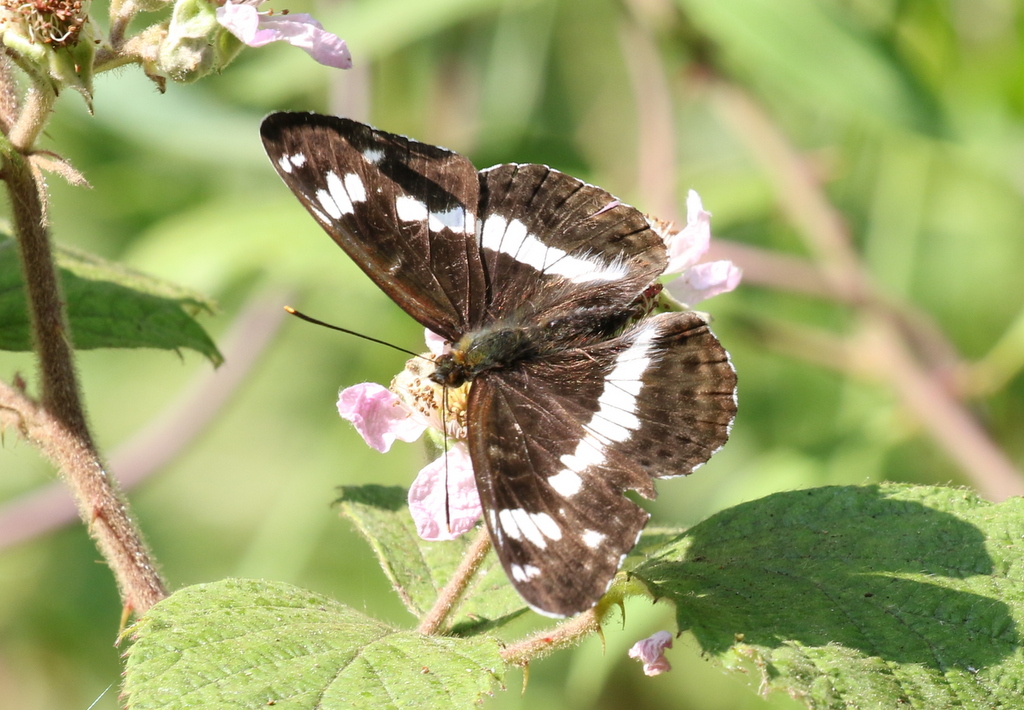
There were no ducks or grebes on Salt’s Hole still, but we did stop to listen to a Reed Warbler singing in the reeds. An Emperor Dragonfly was patrolling over the water, chasing off any other dragonflies it could see. A Great Spotted Woodpecker called from the trees behind us and we could hear another Goldcrest singing.
There is a small group of elm trees by the path before Washington Hide, and this is a regular spot for White-letter Hairstreaks, the trees being their larval food plant. There was no sign of any feeding around the brambles or privet lower down, but after watching the tree tops we did find one White-letter Hairstreak high in the trees. It landed, thankfully somewhere we could get the scope on it, and see the white ‘w’ letter on the underside of its hindwing, from which it gets its name.
Just before we got to Washington Hide, we stopped by the gate to listen to a Sedge Warbler singing. We could see it perched in the brambles on the near edge of the reeds and through the scope we could see its bold, pale supercilium. It was quite mobile, moving from bush to bush, singing. A juvenile Marsh Harrier was flying round over the grass, dark chocolate brown but for an orangey buff head, before it landed in the top of a bush out in the reeds.
The other side of Meals House, we ran into another tit flock on the edge of the trees. A stop to scan through them paid off when one of the group spotted a Treecreeper on the trunk of one of the pines. It stopped for a few seconds and was very hard to see, camouflaged against the bark. When it flew out to another dead tree briefly, it was followed by a second Treecreeper, so possibly there was a family party in the flock.
As we walked up along the path towards Joe Jordan Hide, we could already see a large flock of white birds on the edge of the pool out on the grazing marsh – Spoonbills. From the hide, we got them in the scope and could see they were mostly juveniles. There were about 25 Spoonbills in total, of which at least 20 were recently fledged youngsters, ‘Teaspoonbills’. The juveniles gather here in a crèche while they wait for their parents to return from feeding.
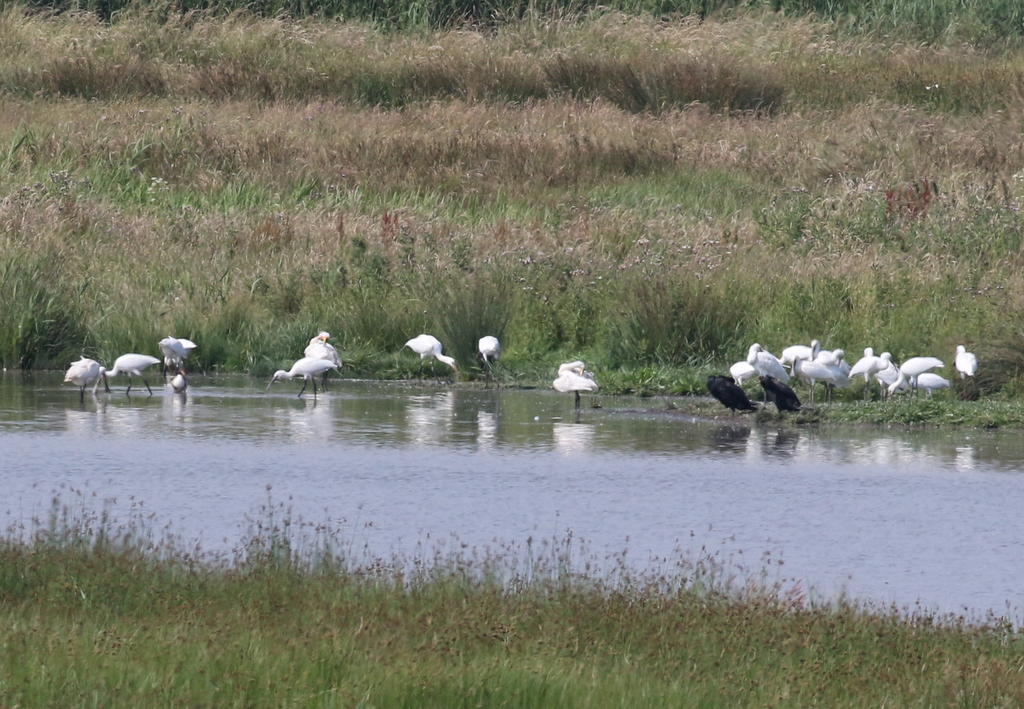
When an adult Spoonbill returned from a feeding trip along the coast and landed on the pool, we watched as two juveniles set off after it. They were begging to be fed – bobbing their heads up and down and flapping their wings. The pester power was relentless – they followed the adult for ages until it eventually stopped to regurgitate some food.
We were hoping to see Great White Egret here today too, but they were slightly less helpful. We watched one three times circle low over the reeds before disappearing behind the trees again, but you had to be quick to see it. Another Great White Egret could be seen way off in the distance towards Burnham Overy Staithe, miles away and flying further away from us too.
There was plenty of Marsh Harrier action from the hide again, with one or two juveniles up, flying round and exercising their wings. At one point, we heard a Marsh Harrier calling, and the next thing we knew a male appeared above the wood displaying. It did a series of swoops and somersaults, gradually losing height until it landed on the grass. Unusual to see at this time of year.
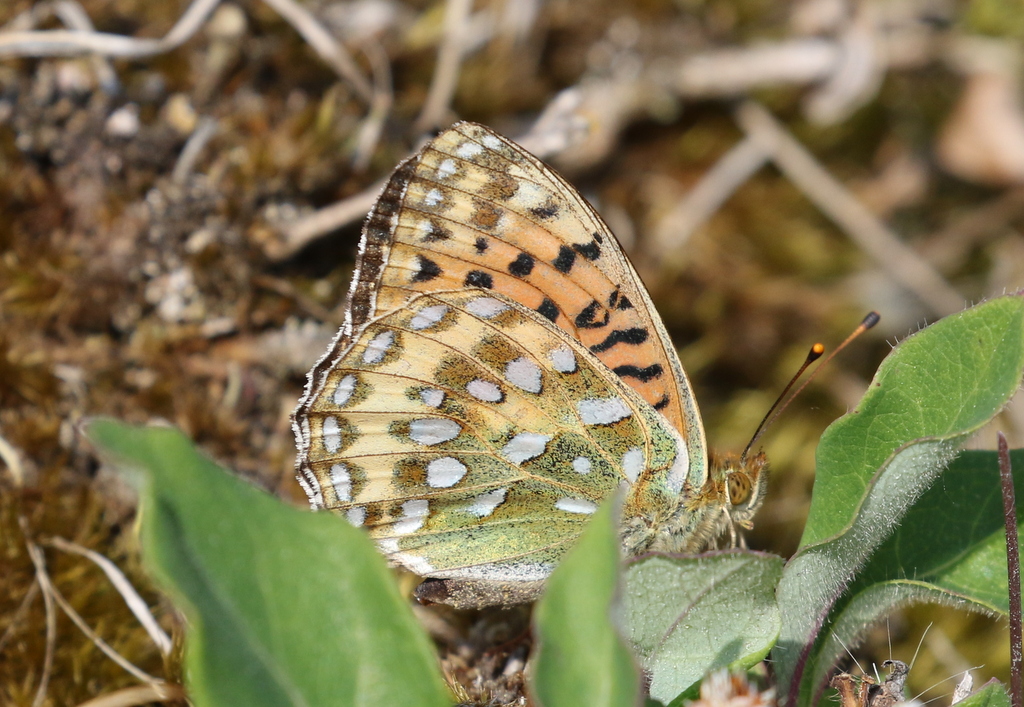
From Joe Jordan hide, we had a quick walk out into the dunes beyond the pines. We quickly spotted a Dark Green Fritillary flying low over the grass, but it wasn’t stopping and disappeared off over the ridge. We found several more, but they were all very active in the heat of the day, with only one landing down in the short grass briefly.
Nearby, in one of the dune slacks, was a great carpet of wild flowers, including a good number of orchids. There were lots of purple Southern Marsh Orchids, although most of them are a little past their best now. The Marsh Helleborines are just out, so were looking very smart.
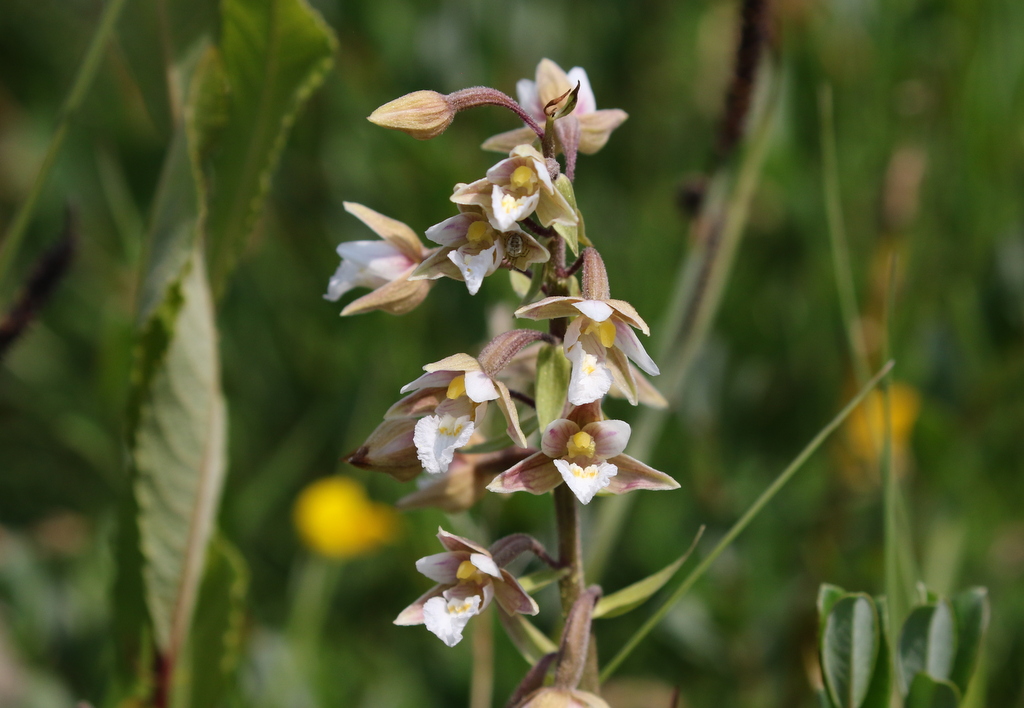
The beach back at Holkham Gap was packed with people, perhaps not surprisingly given the weather, and their was quite a bit of disturbance from walkers and horse riders even down to the far end of the pines. We could hear Little Terns calling and looked across to see four flying round over the fenced area between us and the Gap. They headed out towards the sea, so we decided not to head back via the beach.
There were lots of skippers flying now, on our way back on the other side of the pines, and several Ruddy Darters. A Jay was feeding in the shadows under the trees. We heard a couple of Goldcrests singing and stopped to see if we could get a look at them, but they were very hard to see high in the pines.
Titchwell was the destination for the afternoon. On the drive west, we looked out over Burnham Norton marshes from the coast road and saw a large white bird fly up. It circled round over the reeds and fortunately there was nothing coming so we could pull up for a second to confirm it was another Great White Egret. It dropped down into a ditch and we continued on our way, admiring the tight groups of Common Swifts zooming around over the roofs of the villages we passed through. We could hear them screaming through the open windows.
It was lunch time when we arrived at Titchwell, so we stopped for a bite to eat in the picnic area. Afterwards, we headed out onto the reserve. There was a nice fresh breeze once we got out of the trees. A couple of Reed Buntings were still singing out in the reedbed and several young Marsh Harriers were flying round over the reeds.
Someone had just seen a couple of Bearded Tits disappear into the reeds close to the path, so we waited a couple of minutes but they didn’t reappear. We did see a couple of Reed Warblers zipping back and forth across the small pools. We stopped again by the reedbed pool where a large raft of ducks included Mallard, Gadwall, Shoveler and Common Pochard, with the drakes all in their rather dull eclipse plumage now. A stripy-headed juvenile Great Crested Grebe was out towards the back and one of the adults then appeared from the reeds with a fish to feed it.
The Freshmarsh is chock-full of birds at the moment, so it is hard to know where to look. We started in Island Hide, with a Ruff on the mud just in front of the windows. There are lots of Ruff here at the moment, mostly males returned from their breeding grounds and already rapidly losing their ornate ruff feathers. As a consequence, they are looking rather scruffy! No two are alike, which is a source of constant confusion for the unwary. If you see a wader and don’t know what it is, think Ruff!
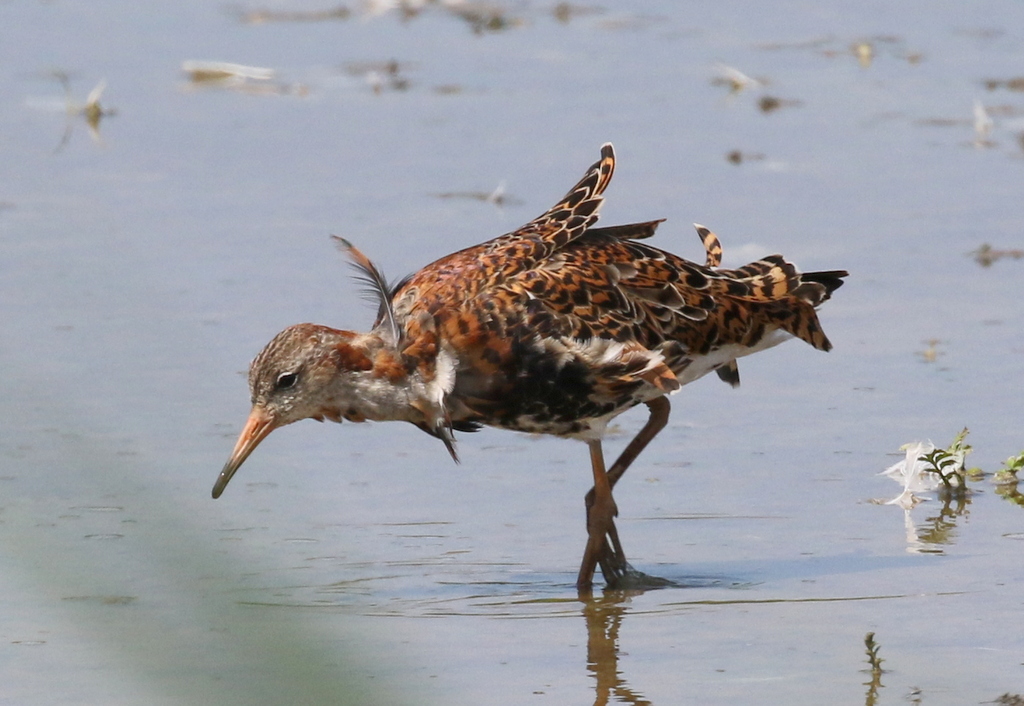
There are lots of Avocets on here too at the moment, with lots of birds coming to the Freshmarsh from elsewhere, after the breeding season, to moult. We didn’t count them all, but in recent days there have been over 500 here. Black-tailed Godwit numbers have been increasing too, as birds return from Iceland, with most of them still for now sporting their bright rusty breeding plumage.
The Spotted Redshanks were all asleep around the islands when we first looked, but gradually some of them started to wake up and walk around or feed for a bit, so we could see their long, needle-fine bills. Several have already started to moult and their black breeding plumage is now liberally peppered with silvery grey, but one in particular was still largely black. It looked very smart when it finally woke up and walked round for a few seconds.
A few Dunlin had dropped in, with at least 16 now scattered around the edges of the islands or in among the legs of the roosting godwits (apparently they had not been there earlier). While we were looking through them, we noticed that one was colour-ringed, with a red flag on its right leg. At the time of writing, it looks like this was possibly ringed in Spain, though we are waiting to hear back with more details.
There were a few ducks and geese on here today, mainly Teal, though again with the drakes not at their best now, and Shelduck. A pair of Egyptian Geese swam across to the island to join all the Greylags. We had a look along the edge of the reeds for any Bearded Tits but the breeze was catching the vegetation here and the water was also lapping up on the mud at the base of the reeds, so despite hearing some pinging calls, we couldn’t see any.

We had seen two or three Little Gulls swimming around between the hide and the reedbed, at one point with a juvenile Black-headed Gull for size comparison, but we got a better look at them from back up on the main path, where another three were loafing on the edge of the nearest island. The Little Gulls are all young, 1st summer birds and we counted at least nine scattered around the freshmarsh today.
The island in front of Parrinder Hide is covered in Avocets at the moment and they spent much of the time we were in there today squabbling. A group of four were arguing right in front of the hide when we arrived.
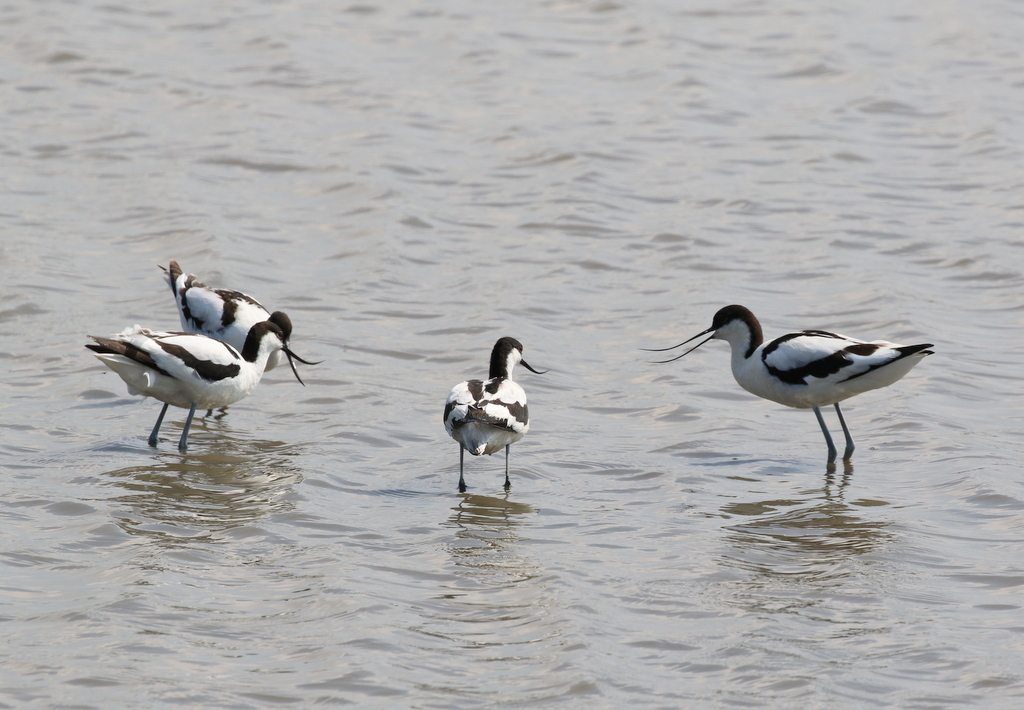
A single Little Ringed Plover dropped in on the island right in front of the hide. It was close enough that we could see the golden yellow ring round its eye, as well as its pointy black bill and flesh coloured legs.
The Freshmarsh is still dominated by the gulls though. The fenced off Avocet Island has been taken over this year, but it has resulted in over 50 pairs of Mediterranean Gulls nesting with all the Black-headed Gulls. Many of the young have now started to fledge and we had a good look at some of the scaly-backed juvenile Mediterranean Gulls loafing around the islands today.
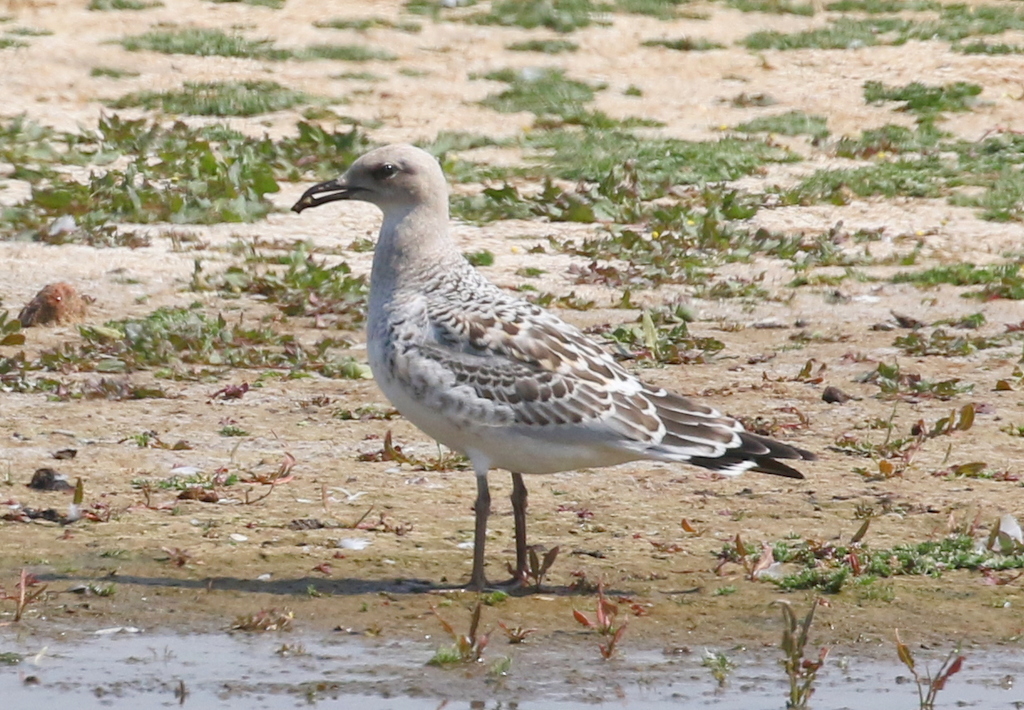
Continuing on, out towards the beach, we stopped to have a look at the Volunteer Marsh. A single Curlew was out along the edge of the channel at the far end, but walked up onto the saltmarsh where it was remarkably well camouflaged. A white Little Egret in the same view stood out a little more obviously!
A Lapwing was feeding on the edge of the channel, just below the path. Even though it was moulting too, and had lost its crest, it still looked stunning as its metallic green upperparts caught the light, shining bronze and purple.

There were lots of Oystercatchers roosting on the Tidal Pools (which are no longer tidal!), and a few Common Redshank, but we couldn’t seem much else out here today. Out on the beach, the tide was just going out. More Oystercatchers were loafing on the sand, along with lots of Herring Gulls. There had been some Sanderling here earlier, but they had gone off along the beach towards Thornham Point, We could just make out some small dots running around on the shore in the heat haze!
We had a quick look out to sea, but there was nothing moving apart from Sandwich Terns, flying back in towards Scolt Head from feeding out in the mouth of the Wash. We decided to head back. At the Tidal Pools, a Common Tern was fishing. It dived into the water, caught a fish and headed off towards the Freshmarsh. A few seconds later it was back again.
Bearded Tit had been on the wish list for the day, so we stopped back at the reedbed to have another go. It wasn’t long before we heard some ‘pinging’ and looked across to see two Bearded Tits fly across one of the channels. One perched up very briefly in the tops of the reeds, but quickly dropped in out of view.
Thankfully, a minute or so later the two Bearded Tits flew again. It looked like they might drop down behind the bank, but they flew straight over it and came down into the reeds at the back of one of the small pools just below the path. They landed in the base of the reeds and we could see them perched on a reed stem, side by side, preening. It was a pair and we got them in the scope, eventually getting a really good look at both of them, including the male with its powder grey head and black moustache.
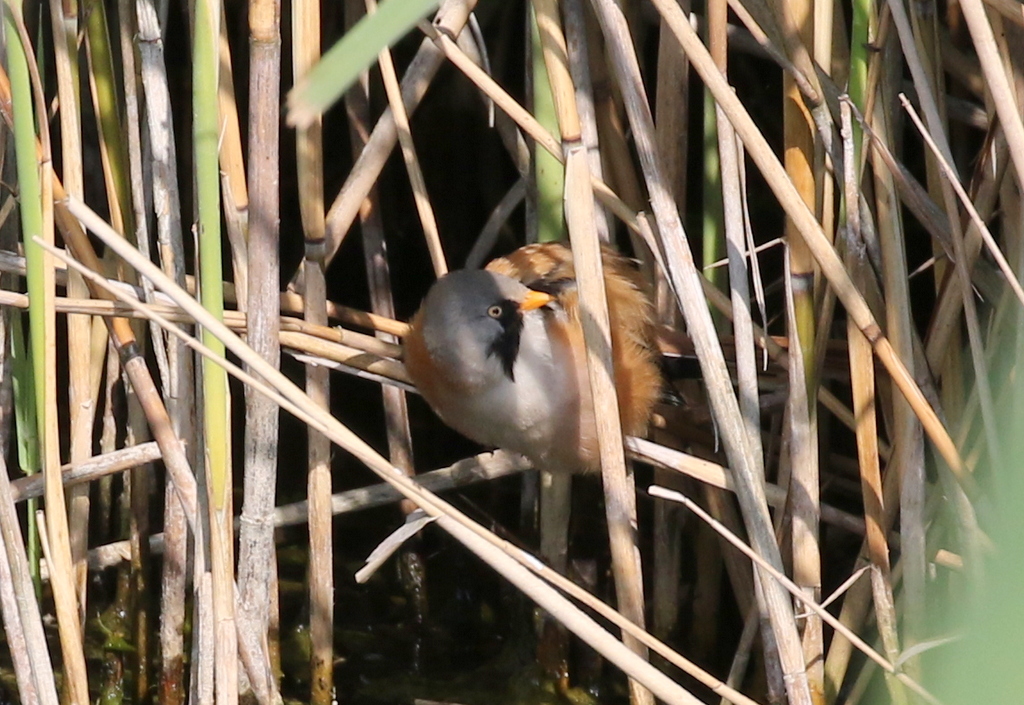
Eventually, the Bearded Tits finished preening and started to feed, working their way round the edge of the pool at the base of the reeds. When they finally disappeared in, we carried on back to the car. It was a nice way to end a very enjoyable day of Summer birding.
















